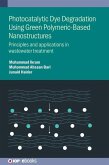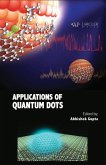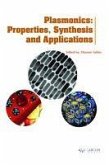The global energy consumption has been increasing at an alarming rate over the years. In 1998, it was 12.7TW, but in 2050, it is expected to be around 26.4 to 32.9TW and in 2100, it will increase up to 46.3 to 58.7TW. The yearly increase in global energy consumption is expected to result in the rise of demands towards natural resources such as coal, petroleum and natural gas. Since these natural resources take thousands of years to form, it is impossible to replace them in the same rate at which they are being consumed. Therefore, it is a well-known fact that with the shortage of resources there will be an unprecedented rise in the harvesting expenses. Hence, the reliability on the other sources of energy, which are renewable will rise. In the current scenario solar cells, which are also known as photovoltaic cell seem to be one of the promising options of renewable energy.The very first cohort of photovoltaic cells were constructed using crystalline silicon disks. The next batch was primarily built using semiconductors. These semiconductors were usually compounds of III-V type, like cadmium telluride and copper indium selenide/sulphide. The dye-sensitized solar cells (DSSC) which belong to the thin film group, emerged as a new class of low cost energy conversion devices with simple manufacturing procedures. Incorporation of dye molecules in some wide bandgap semiconductor electrodes was a key factor in developing photoelectrochemical solar cells with improved efficiency.In this book, we begin with a detailed explanation about the basics of solar cell technology and move on to overview some aspects of the historical background, present-scenario, currently popular applications and future prospects of dye sensitized solar cells. The structural aspects and working principle of this promising class of solar cells has been dealt in detail for providing a good understanding of the basics. Some novel schemes in preparation and assembly of dye sensitized solar cell have been presented from recent literature reports. The performance of nanocrystalline solar cell samples can be appreciably improved by optimizing the preparation technique, the class of the nanostructured materials, types of electrolyte, and high transparent conductive electrodes. Challenges associated with materials choice, nanostructured electrodes and device layers structure design are detailed. Recent trends in the development of nano-crystalline materials for DSSCs technology are introduced. Manufacturability and different approaches suggested for commercialization of DSSC for various applications are outlined and discussed in detail.
Hinweis: Dieser Artikel kann nur an eine deutsche Lieferadresse ausgeliefert werden.
Hinweis: Dieser Artikel kann nur an eine deutsche Lieferadresse ausgeliefert werden.








